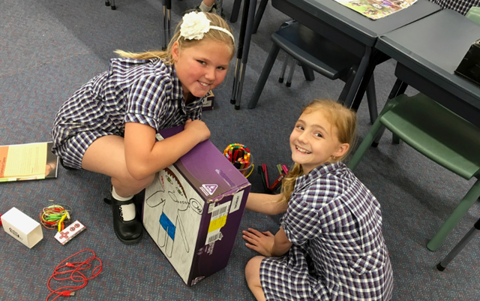DLSG Case Study: Trinity Lutheran College

About this school story
Trinity Lutheran College is a non-government school in Mildura, Victoria and has a student population of 400 students from Preparatory to Year 10. It received a $20,000 grant in the DLSG round 1.
Year band: 1-2, 3-4, 5-6, 7-8, 9-10
School Profile
Trinity Lutheran College is a non-government school in Mildura, Victoria and has a student population of 400 students from Preparatory to Year 10. Education programs for students in the Early Years sub-school focus on literacy and numeracy skills, as well as art, music, physical education and Italian classes. The Middle Years sub-school provides study covering the Key Learning Areas. In the Later Years sub-school students in Years 9 and 10 can undertake VCE level 1 and 2 subjects (Year 11 subjects) and TAFE certificate courses. In 2018, the College was accepted into candidacy for the International Baccalaureate Primary Years Program and the Middle Years Program.
Focus of the Grant Activity
The DLSG grant enabled Trinity Lutheran College to create an effective STEAM maker space. Students solved real world authentic problems relating to the local medical community. The students met with local medical personnel and health practitioners, identified issues through the inquiry process and solved them using their inquiry and digital literacy skills. The process and solutions were then presented to the school community at the College’s primary years expo and information evening at which local industry personal as well as parents were present.
Some of the solutions included coding a sunscreen reminder app (now found on the App store), robot guide dogs, sound activated light door alarms, and prosthetic cat and human limbs.
The DLSG grant also provided opportunities to upskill teachers in implementing the Australian Curriculum: Digital Technologies through support and mentoring and enabled a greater focus on best practice pedagogy using a diverse range of digital technology activities and learning opportunities within the school.
Advice for other schools
The success of the project has been due to engaging local community groups and utilising a variety of technologies. By developing these partnerships with local community groups and parents as experts, we were able to ensure that the problems students solved were authentic and the process sustainable. By purchasing one of each technology, testing how it worked in the classroom, we then purchased group sets once we were sure the technology met the needs of our students and the curriculum.

